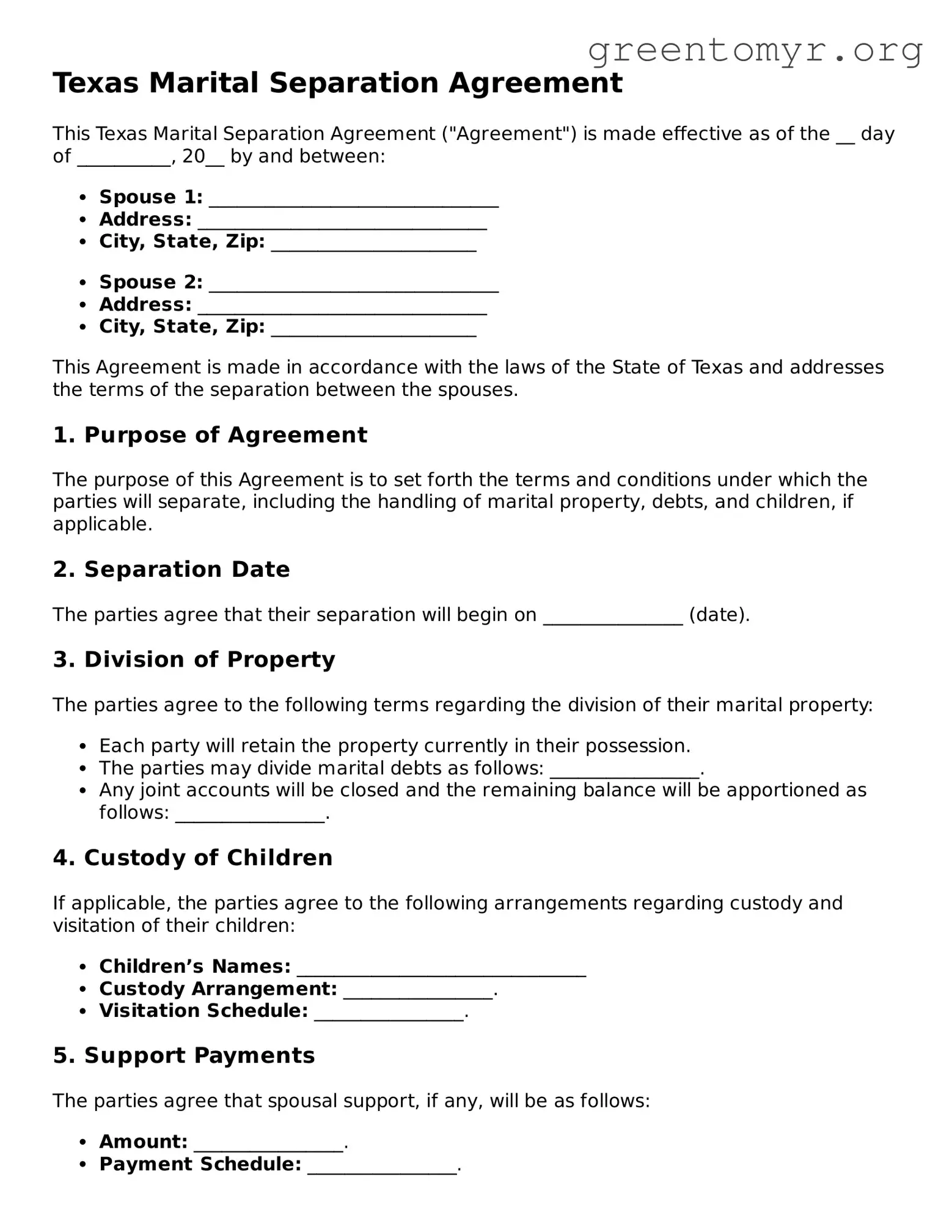Texas Marital Separation Agreement
This Texas Marital Separation Agreement ("Agreement") is made effective as of the __ day of __________, 20__ by and between:
- Spouse 1: _______________________________
- Address: _______________________________
- City, State, Zip: ______________________
- Spouse 2: _______________________________
- Address: _______________________________
- City, State, Zip: ______________________
This Agreement is made in accordance with the laws of the State of Texas and addresses the terms of the separation between the spouses.
1. Purpose of Agreement
The purpose of this Agreement is to set forth the terms and conditions under which the parties will separate, including the handling of marital property, debts, and children, if applicable.
2. Separation Date
The parties agree that their separation will begin on _______________ (date).
3. Division of Property
The parties agree to the following terms regarding the division of their marital property:
- Each party will retain the property currently in their possession.
- The parties may divide marital debts as follows: ________________.
- Any joint accounts will be closed and the remaining balance will be apportioned as follows: ________________.
4. Custody of Children
If applicable, the parties agree to the following arrangements regarding custody and visitation of their children:
- Children’s Names: _______________________________
- Custody Arrangement: ________________.
- Visitation Schedule: ________________.
5. Support Payments
The parties agree that spousal support, if any, will be as follows:
- Amount: ________________.
- Payment Schedule: ________________.
6. General Provisions
The parties agree to the following general provisions:
- This Agreement represents the entire understanding between the parties.
- Any changes to this Agreement must be made in writing and signed by both parties.
In witness whereof, the parties have executed this Texas Marital Separation Agreement as of the date first written above.
Spouse 1 Signature: ________________________ Date: ________________
Spouse 2 Signature: ________________________ Date: ________________
